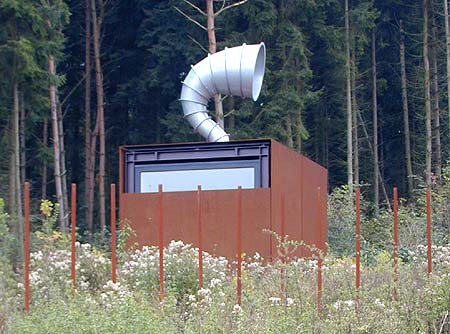Of the acoustic of King's College chapel, Sir David Willcocks, director of King's Choir from 1957-74, said that it was 'so rich that it can make a fart sound like a sevenfold amen'. The interior dimensions of the chapel are 40' wide x 80' high x 289' long: hardly the 'shoebox' of the Concertgebouw. Even worse it is largely stone and glass inside, with very little wood, apart from the screen and the choir stalls. How is this possible? Is architectural acoustics science or alchemy?
Different types of music demand different acoustics. Choir music, especially early vocal music, is often well suited to long reverberation times because it allows for overlapping of resounding tones, creating a rich polyphonic sound. More complex contemporary music (with faster changing harmonies) would sound "blurred" in such spaces, and therefore the wooden "shoebox" model, with medium reverberation, fits better for 't Concertgebouw.
I remember reading somewhere that most of Bach's music wouldn't have been possible to perform well if it wasn't for the different acoustics/architectural form of baroque churches. Shorter reverberation time I guess. Anyway...
if you're interested in the history of acoustics & its impact on architecture and building materials, go read "the soundscape of modernity" by Emily Thompson.. it is really enlightening.
definitely a science, any kind of music -opera, baroque, renaissance, jazz, rock..- has a specific reverberation time, that's why most concert halls have mobile elements, just by moving a couple of panels you can change the rev. time to fit the style played that week, or just choosing a certain material with a defined reflecting value.. Renzo Piano's subterranean IRCAM in Paris is worthy to check out (Zappa recorded there some of his orchestral experiments with Boulez):
conferences or theatre also have defined reverberation times.. there are softwares to simulate and predict exactly which rev. times a particular hall will have depending on the materials, the characteristic silhouette, etc.. for each spectator and for each musician on stage
acoustics in architecture are pretty interesting.. I wonder what you can hear inside Gigon & Guyer's Kalkriese's park pavilion:
Oct 16, 05 8:45 am ·
·
Block this user
Are you sure you want to block this user and hide all related comments throughout the site?
Archinect
This is your first comment on Archinect. Your comment will be visible once approved.
acoustic oddity
Of the acoustic of King's College chapel, Sir David Willcocks, director of King's Choir from 1957-74, said that it was 'so rich that it can make a fart sound like a sevenfold amen'. The interior dimensions of the chapel are 40' wide x 80' high x 289' long: hardly the 'shoebox' of the Concertgebouw. Even worse it is largely stone and glass inside, with very little wood, apart from the screen and the choir stalls. How is this possible? Is architectural acoustics science or alchemy?
Different types of music demand different acoustics. Choir music, especially early vocal music, is often well suited to long reverberation times because it allows for overlapping of resounding tones, creating a rich polyphonic sound. More complex contemporary music (with faster changing harmonies) would sound "blurred" in such spaces, and therefore the wooden "shoebox" model, with medium reverberation, fits better for 't Concertgebouw.
thanks for clearing that up. much appreciated.
I remember reading somewhere that most of Bach's music wouldn't have been possible to perform well if it wasn't for the different acoustics/architectural form of baroque churches. Shorter reverberation time I guess. Anyway...
if you're interested in the history of acoustics & its impact on architecture and building materials, go read "the soundscape of modernity" by Emily Thompson.. it is really enlightening.
definitely a science, any kind of music -opera, baroque, renaissance, jazz, rock..- has a specific reverberation time, that's why most concert halls have mobile elements, just by moving a couple of panels you can change the rev. time to fit the style played that week, or just choosing a certain material with a defined reflecting value.. Renzo Piano's subterranean IRCAM in Paris is worthy to check out (Zappa recorded there some of his orchestral experiments with Boulez):



conferences or theatre also have defined reverberation times.. there are softwares to simulate and predict exactly which rev. times a particular hall will have depending on the materials, the characteristic silhouette, etc.. for each spectator and for each musician on stage
acoustics in architecture are pretty interesting.. I wonder what you can hear inside Gigon & Guyer's Kalkriese's park pavilion:
Block this user
Are you sure you want to block this user and hide all related comments throughout the site?
Archinect
This is your first comment on Archinect. Your comment will be visible once approved.